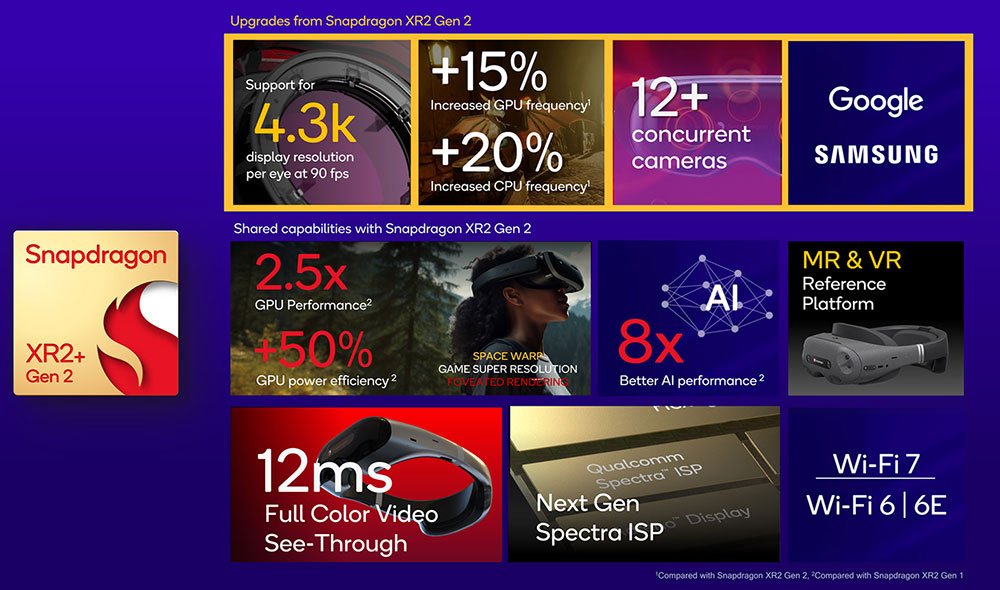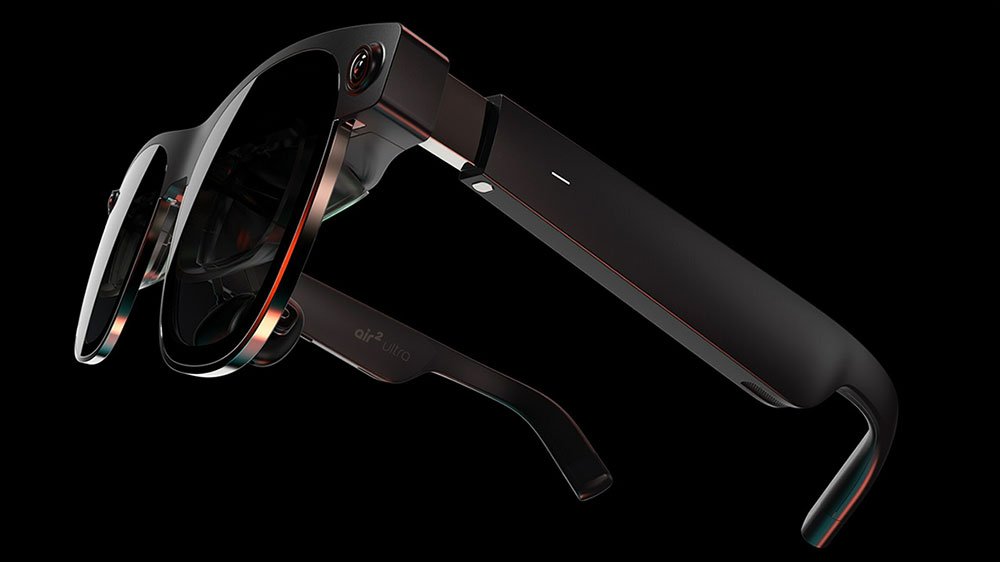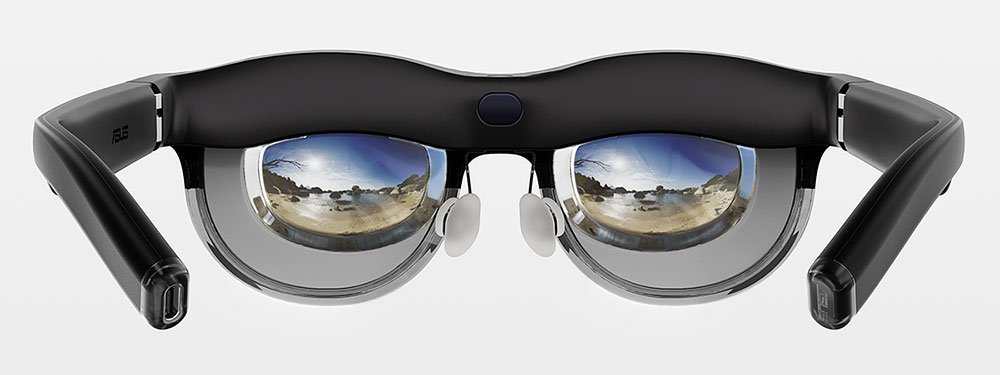Introduction:
As Apple prepares to unveil its groundbreaking product, Vision Pro, anticipation grows regarding potential competitors in the immersive tech sector. This analysis delves into the aftermath of CES 2024, exploring whether any unveiled technologies pose a serious challenge to Apple’s Vision Pro, slated for release in February.
The Augmented Reality Landscape: In a fast-evolving technological era, the battle for dominance in augmented reality intensifies. As Apple makes strides in this realm, competitors must elevate their innovations to match the tech giant’s prowess. CES 2024 provided a prime opportunity to assess if any contenders could pose a significant challenge to Vision Pro.
 Insights from CES 2024: Despite being unable to attend CES in person, a comprehensive online perspective enabled a meticulous evaluation of potential rivals and distinctive features that could set Vision Pro apart. Let’s delve into key takeaways from the event.
Insights from CES 2024: Despite being unable to attend CES in person, a comprehensive online perspective enabled a meticulous evaluation of potential rivals and distinctive features that could set Vision Pro apart. Let’s delve into key takeaways from the event.
Asus AirVision M1:
Asus showcased the AirVision M1 wearable display, a device categorized more accurately as smart glasses than virtual- or mixed-reality headsets. Boasting a Micro OLED display with 1080p quality for each eye, this wearable offers a unique viewing experience with a vertical field of view surpassing typical AR glasses. Features include multiple virtual screens, touchpad controls, and advanced conferencing capabilities.
Sony’s ‘Nameless’ Headset:
Sony, renowned for its PlayStation 5 headsets, unveiled a high-quality XR head-mounted display with Siemens, lacking an official name. Equipped with six external cameras and sensors, this headset aims at spatial content creation, utilizing Sony’s rendering technology and Qualcomm’s Snapdragon XR2+ Gen 2 Platform for realistic 3D object rendering.
Xreal Air 2 Ultra:
Among the standout innovations at CES 2024, the Xreal Air 2 Ultra emerged as a beacon of advancement in the realm of augmented reality. Representing the second generation of Xreal’s Air AR glasses, the Ultra version not only upholds the legacy of its predecessor but also introduces several enhancements, solidifying its position as a formidable contender in the immersive tech market.
 Unveiling Titanium Elegance: Crafted with precision and elegance, the Xreal Air 2 Ultra boasts a frame composed of titanium, a material renowned for its durability and lightweight properties. This not only enhances the device’s robustness but also contributes to a comfortable and immersive user experience.
Unveiling Titanium Elegance: Crafted with precision and elegance, the Xreal Air 2 Ultra boasts a frame composed of titanium, a material renowned for its durability and lightweight properties. This not only enhances the device’s robustness but also contributes to a comfortable and immersive user experience.
Six Degrees of Freedom for Unmatched Tracking: Positional tracking reaches new heights with the incorporation of six degrees of freedom (6DoF), a feature that empowers users with unparalleled freedom of movement. Two strategically placed 3D cameras on either side of the gadget meticulously map the surroundings, providing precise gesture recognition and hand tracking capabilities.
Visual Delight with Sony OLED Displays: The visual prowess of the Xreal Air 2 Ultra is driven by tiny yet powerful Sony OLED displays for each eye. Operating at a refresh rate of 120Hz and boasting a resolution of 1080p, these displays deliver a visually immersive experience. In 3D mode, the refresh rate gracefully transitions to 90Hz, ensuring optimal performance.
A Glimpse Into the Field of Vision: With a remarkable 52-degree field of vision, the Xreal Air 2 Ultra surpasses industry standards, providing users with a more expansive and encompassing view. The device achieves a brightness of 500 nits (250 nits in 3D mode), complemented by three dimming levels that dynamically adjust to enhance immersion based on the user’s surroundings.
Immersive Audio Experience: Audio excellence is not overlooked, as the Xreal Air 2 Ultra integrates a sophisticated onboard directional audio system. Two microphones enhance privacy during usage, and the audio system is designed to complement the immersive visual experience, contributing to a holistic augmented reality encounter.
Integration with Samsung S22/S23 and Future-Ready Features: Positioned as a device with a forward-looking approach, the Xreal Air 2 Ultra aligns itself with Samsung’s S22 and S23, demonstrating compatibility with cutting-edge technology. Additionally, the device is equipped with a “Xreal custom computing unit” currently under development, hinting at future-ready features that will propel augmented reality experiences to new heights.
Developer-Focused Approach and Pricing Strategy: Targeting developers eager to explore the boundaries of augmented reality, the Xreal Air 2 Ultra is available for pre-order at a price point of $699. This strategic pricing and focus on developers underscore Xreal’s commitment to fostering a community of innovators who will shape the future of AR technology.
Anticipated Shipments and Continuous Innovation: With pre-orders currently being accepted, shipments of the Xreal Air 2 Ultra are scheduled to commence at the end of March. Xreal’s commitment to innovation is evident in its continuous efforts to push the boundaries of spatial computing, making the Ultra version a promising player in the augmented reality landscape.
Qualcomm’s New AR/VR Chipset:
Qualcomm made waves with the Snapdragon XR2+ Gen 2 platform, claiming to challenge Apple’s Vision Pro. With enhanced GPU and CPU frequencies, realistic resolution, and AI capabilities, Qualcomm collaborates with Google and Samsung to pioneer leading XR experiences, introducing a potential disruptor in the immersive tech market.
Assessing the Competitive Landscape: While none of the CES 2024 revelations may pose an immediate threat to Apple, the competitive landscape is evolving. Vision Pro’s hefty price tag of $3,499 creates an opportunity for more affordable solutions. Sony’s headset caters more to developers, and Xreal’s product resembles Microsoft’s HoloLens, highlighting diverse approaches in the market.
 The Qualcomm Factor: Qualcomm’s Snapdragon XR2+ Gen 2 platform emerges as a noteworthy player, promising enhanced experiences and collaborations with tech giants like Google and Samsung. The unveiling may not directly impact Apple, but it signals a shift in the competitive dynamics of the immersive tech sector.
The Qualcomm Factor: Qualcomm’s Snapdragon XR2+ Gen 2 platform emerges as a noteworthy player, promising enhanced experiences and collaborations with tech giants like Google and Samsung. The unveiling may not directly impact Apple, but it signals a shift in the competitive dynamics of the immersive tech sector.
Conclusion:
As the immersive tech market evolves, the success of Vision Pro may open avenues for competitors to establish their presence. Apple’s ecosystem and developer advantage remain formidable, but the race for a compelling killer app in AR, VR, and XR is pivotal. The unveiling of Vision Pro later this quarter will undoubtedly reveal the direction of the competitive landscape.
Read more: